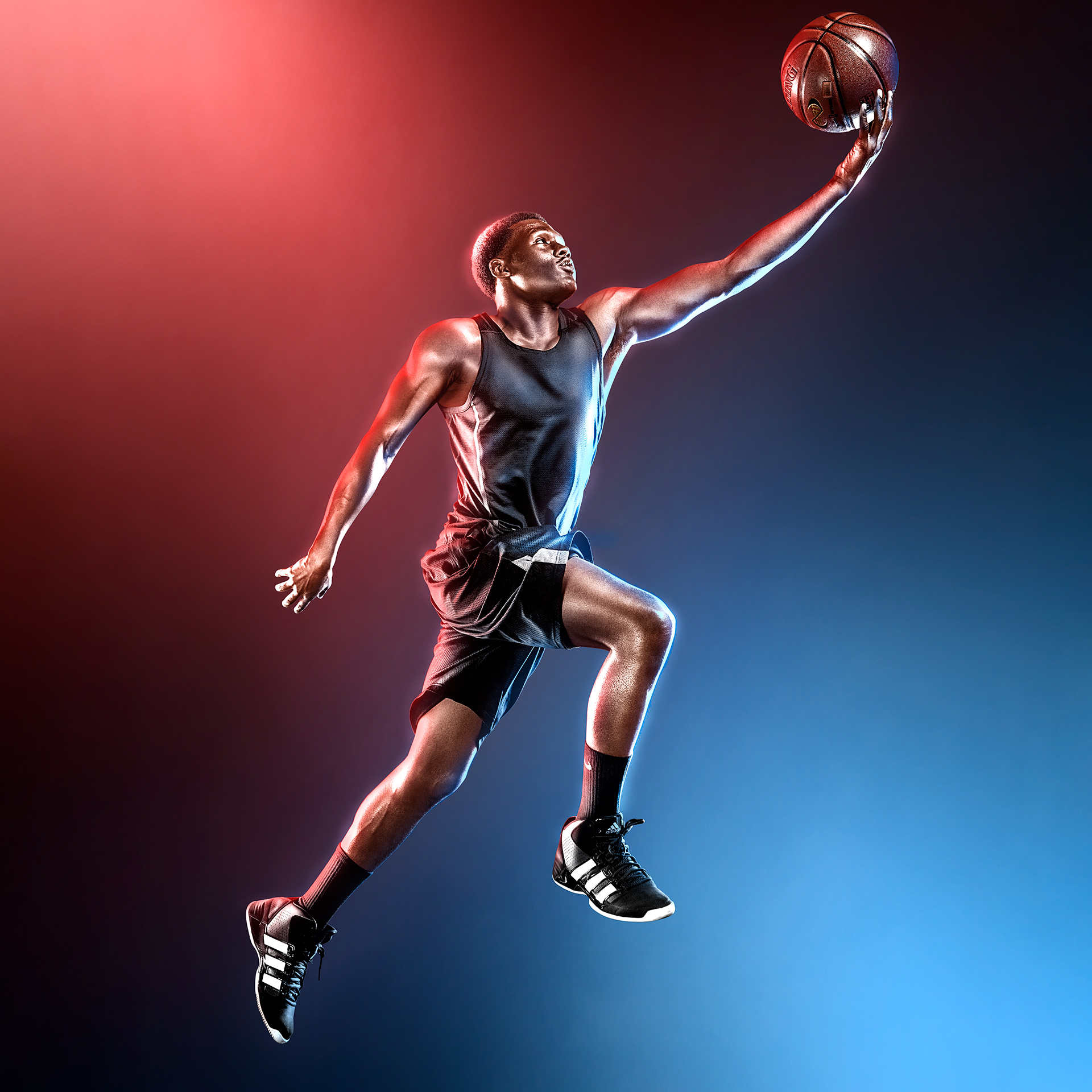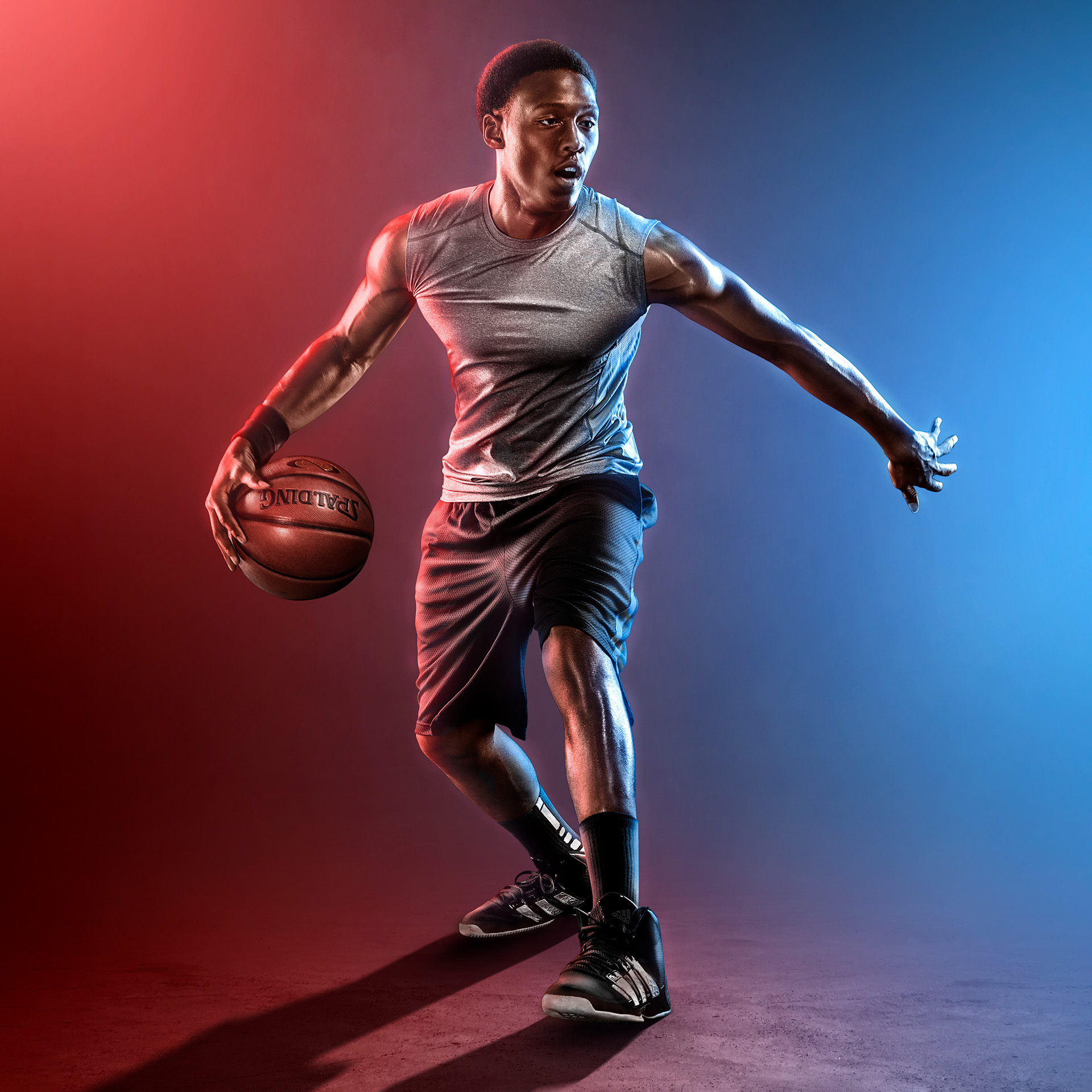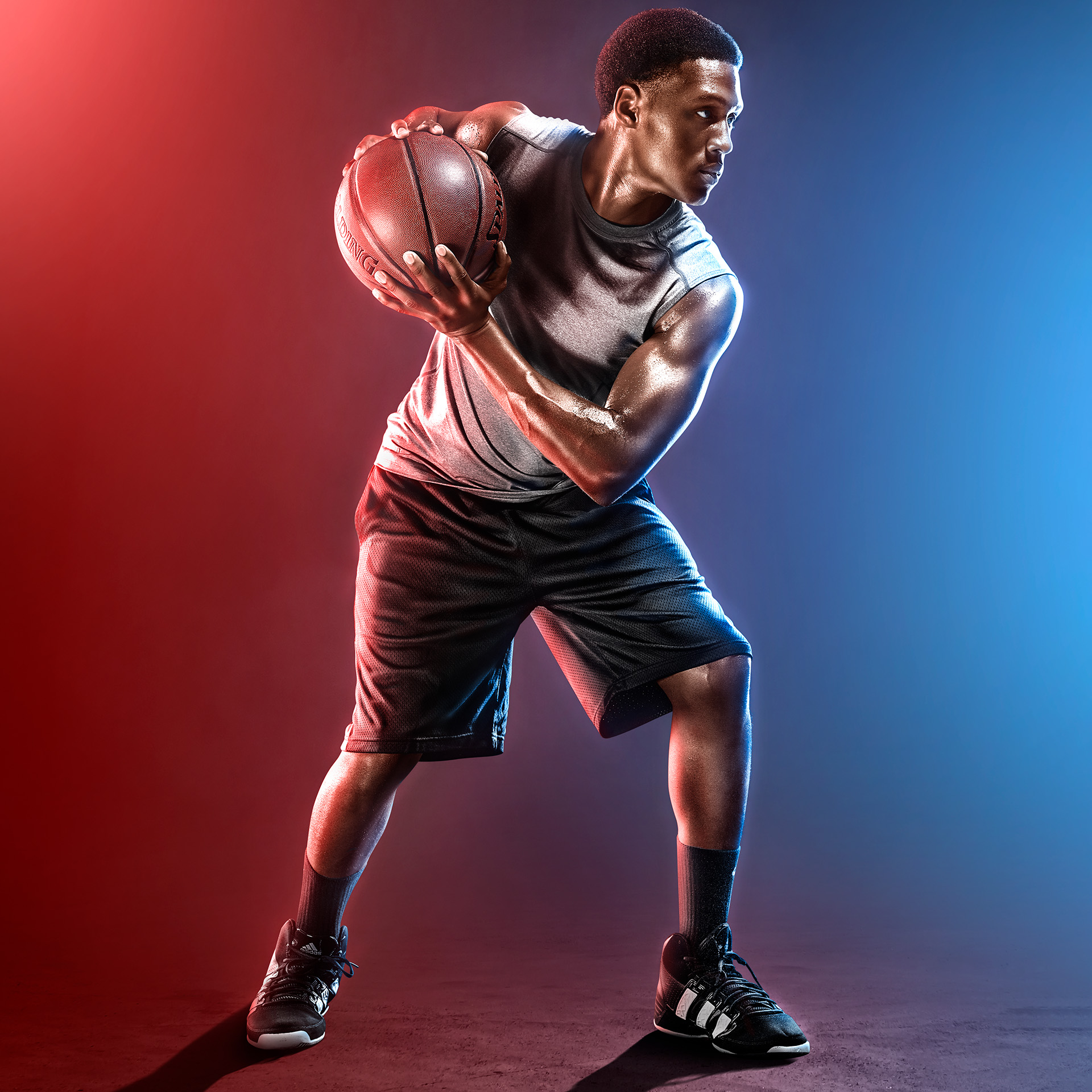Much to the surprise of many, photographing athletes doesn’t always mean you are a sports photographer. Truthfully, I don’t know much about sports at all. My photography of athletes is best captured by the form they create and how my lighting can accentuate it. In many ways, my lack of interest in sports has given me the advantage of not getting starstruck by any of their accomplishments. But how does it work when the person you’re photographing is a model and doesn’t exactly play the sport that you need them to portray?
This was the challenge I faced when photographing a male model for a sports drink. We were creating a series of basketball images, and after casting it was apparent he had the best look of all of them. With an abundance of enthusiasm and willingness to work hard to get the right looks, I, along with the creative director, took to coaching him (no pun intended) to the right form of the sport. It was an approach that leans heavily not on playing basketball, but in hitting the right mark so that the lights did the rest. Think of it more of how a theater would pre-light a set so that a play can convey the proper mood to the audience.
We knew that with an extensive light setup (approximately 15), the highlights would carry the image to the viewer with hard angles making for a lot of crossing lines in the frame to capture them. Being on set was more like watching a dance being choreographed than a sports-based shoot. We had marks on the floor for everything from counterpoint for light metering to take off and landing spots so that the model was stretched enough to sell the motion. As I always do on my photoshoots, we maintain that everyone is equal, from the assistant to the client to the photographer. In doing this, we make sure that everyone feels comfortable having input towards the final image. On this photoshoot this was key to a collaboration of art and athleticism that produced these images.
In many ways having the team work together to direct the athlete allowed me to focus completely on the lighting. I walked the set over and over again, measuring and remeasuring with a light meter to limit highlights from spilling over the top of the model. We wanted to have a split feel where the dynamics of the color separated from the athlete and gave him more of a pop from the background. Instead of going with red and teal, which is getting all too common, we went with a harder red-blue combo. The shadows are better absorbed using a darker combination, however, when combined with non-gelled hard lights, it allows for more perceived depth in the photo. With all the lights on set, we actually found that nearly 75% were behind the subjects’ plain and 25% in front in the form of keys and fills.
As far as the action in front of the camera, being in a closed studio and coaching a model to the positioning allows a photographer to worry less about motion blur on full-powered strobes. All too often with professional athletes, they go into a form that they are familiar with but is very fast, and can only be frozen by cameras with extreme shutter sync speeds. With this production we had the model essentially freeze in the action at a point where there was a bit of a delay. The movement is more like a ballerina leaping than a basketball play driving to the hoop. The slowing down of the motion allowed me to shoot the camera closed down to f/16 for maximum sharpness. It is a trick I’ve learned over the years, especially with track and field athletes. Oftentimes runners think that to look fast in front of the frame means that you have to sprint as fast as possible on set. This is actually not the case, as finding where the form looks fastest for a runner is more effective than them being fast in the first place.
With lighting set, I got to spend time with the model as we jumped in front of a mirror in the studio looking to see what form we created. This also helped me to see what minor details in his jump could be perfected for the shot so that I can get as much of it in the camera as possible. One mannerism that I notice whenever photographing an athlete in the air is how their hand sells the shot. For some players (usually football receivers) the hand opposite the ball clinches up into a fist and can be distracting. Basketball players tend to do the opposite in that their hands are wide open, but also this can catch the viewer’s eye. With this shot, I was able to help the model find a hand positioning that flowed into the jumps movement and made the shot feel a bit more graceful.
The final piece to creating a realistic looking basketball piece with a model that doesn’t play basketball is their sightline. When a jump shot or layup is being photographed in studio, there are a couple of ways to force a perspective of a real basketball game. The first is rather obvious in that the photographer needs to be a low to the floor as can be, and when possible build a stage to allow shooting angles below ground level. For this photoshoot we didn’t construct a raised stage, and instead raised the lights significantly higher than they would be on a standing portrait. This frees up the space of movement and softens the key on the model/athlete. However, over the years I have found that models sell a movement base on the space around them rather than the unseen confinement of the photo. For this reason, we taped a mark on the lower part of the key light for the model to direct his body towards. In aligning his eyes and head at the “X” taped on the key, we made sure that all the lights around existed on the correct axis from the model’s body line.
Hopefully this helps those that photograph athletes on set. And I also hope this helps photographers that aren’t into sports know that they don’t need to limit themselves because of this. The human body is an art form, and sport is its expression. Being able to navigate the lighting dynamically is a way of calling out that expression and making it into art.



